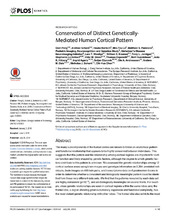| dc.contributor.author | Qian, Peng | en_US |
| dc.contributor.author | Schork, Andrew J. | en_US |
| dc.contributor.author | Bartsch, Hauke | en_US |
| dc.contributor.author | Lo, Min-Tzu | en_US |
| dc.contributor.author | Panizzon, Matthew S. | en_US |
| dc.contributor.author | Westlye, Lars Tjelta | en_US |
| dc.contributor.author | Kremen, William S. | en_US |
| dc.contributor.author | Jernigan, Terry L. | en_US |
| dc.contributor.author | Le Hellard, Stephanie | en_US |
| dc.contributor.author | Steen, Vidar Martin | en_US |
| dc.contributor.author | Espeseth, Thomas | en_US |
| dc.contributor.author | Huentelman, Matt | en_US |
| dc.contributor.author | Håberg, Asta | en_US |
| dc.contributor.author | Agartz, Ingrid | en_US |
| dc.contributor.author | Djurovic, Srdjan | en_US |
| dc.contributor.author | Andreassen, Ole Andreas | en_US |
| dc.contributor.author | Dale, Anders | en_US |
| dc.contributor.author | Schork, Nicholas J. | en_US |
| dc.contributor.author | Chen, Chi-Hua | en_US |
| dc.contributor.author | Schork, Nicholas J | en_US |
| dc.date.accessioned | 2018-04-11T09:34:08Z | |
| dc.date.available | 2018-04-11T09:34:08Z | |
| dc.date.issued | 2016-07-26 | |
| dc.Published | Qian P, Schork AJ, Bartsch H, Lo M, Panizzon MS, Westlye LT, Kremen WS, Jernigan TL, Le Hellard S, Steen VM, Espeseth T, Huentelman M, Håberg A, Agartz I, Djurovic S, Andreassen OA, Dale A, Schork NJ, Chen C, Schork. Conservation of Distinct Genetically-Mediated Human Cortical Pattern. PLoS Genetics. 2016;12(7):e1006143 | eng |
| dc.identifier.issn | 1553-7404 | |
| dc.identifier.issn | 1553-7390 | |
| dc.identifier.uri | https://hdl.handle.net/1956/17599 | |
| dc.description.abstract | The many subcomponents of the human cortex are known to follow an anatomical pattern and functional relationship that appears to be highly conserved between individuals. This suggests that this pattern and the relationship among cortical regions are important for cortical function and likely shaped by genetic factors, although the degree to which genetic factors contribute to this pattern is unknown. We assessed the genetic relationships among 12 cortical surface areas using brain images and genotype information on 2,364 unrelated individuals, brain images on 466 twin pairs, and transcriptome data on 6 postmortem brains in order to determine whether a consistent and biologically meaningful pattern could be identified from these very different data sets. We find that the patterns revealed by each data set are highly consistent (p<10−3), and are biologically meaningful on several fronts. For example, close genetic relationships are seen in cortical regions within the same lobes and, the frontal lobe, a region showing great evolutionary expansion and functional complexity, has the most distant genetic relationship with other lobes. The frontal lobe also exhibits the most distinct expression pattern relative to the other regions, implicating a number of genes with known functions mediating immune and related processes. Our analyses reflect one of the first attempts to provide an assessment of the biological consistency of a genetic phenomenon involving the brain that leverages very different types of data, and therefore is not just statistical replication which purposefully use very similar data sets. | en_US |
| dc.language.iso | eng | eng |
| dc.publisher | PLOS | eng |
| dc.rights | Attribution CC BY | eng |
| dc.rights.uri | http://creativecommons.org/licenses/by/4.0 | eng |
| dc.title | Conservation of Distinct Genetically-Mediated Human Cortical Pattern | en_US |
| dc.type | Peer reviewed | |
| dc.type | Journal article | |
| dc.date.updated | 2018-01-02T13:52:43Z | |
| dc.description.version | publishedVersion | en_US |
| dc.rights.holder | Copyright 2016 The Author(s) | |
| dc.identifier.doi | https://doi.org/10.1371/journal.pgen.1006143 | |
| dc.identifier.cristin | 1383627 | |
| dc.source.journal | PLoS Genetics | |
| dc.relation.project | Norges forskningsråd: 223273 | |

